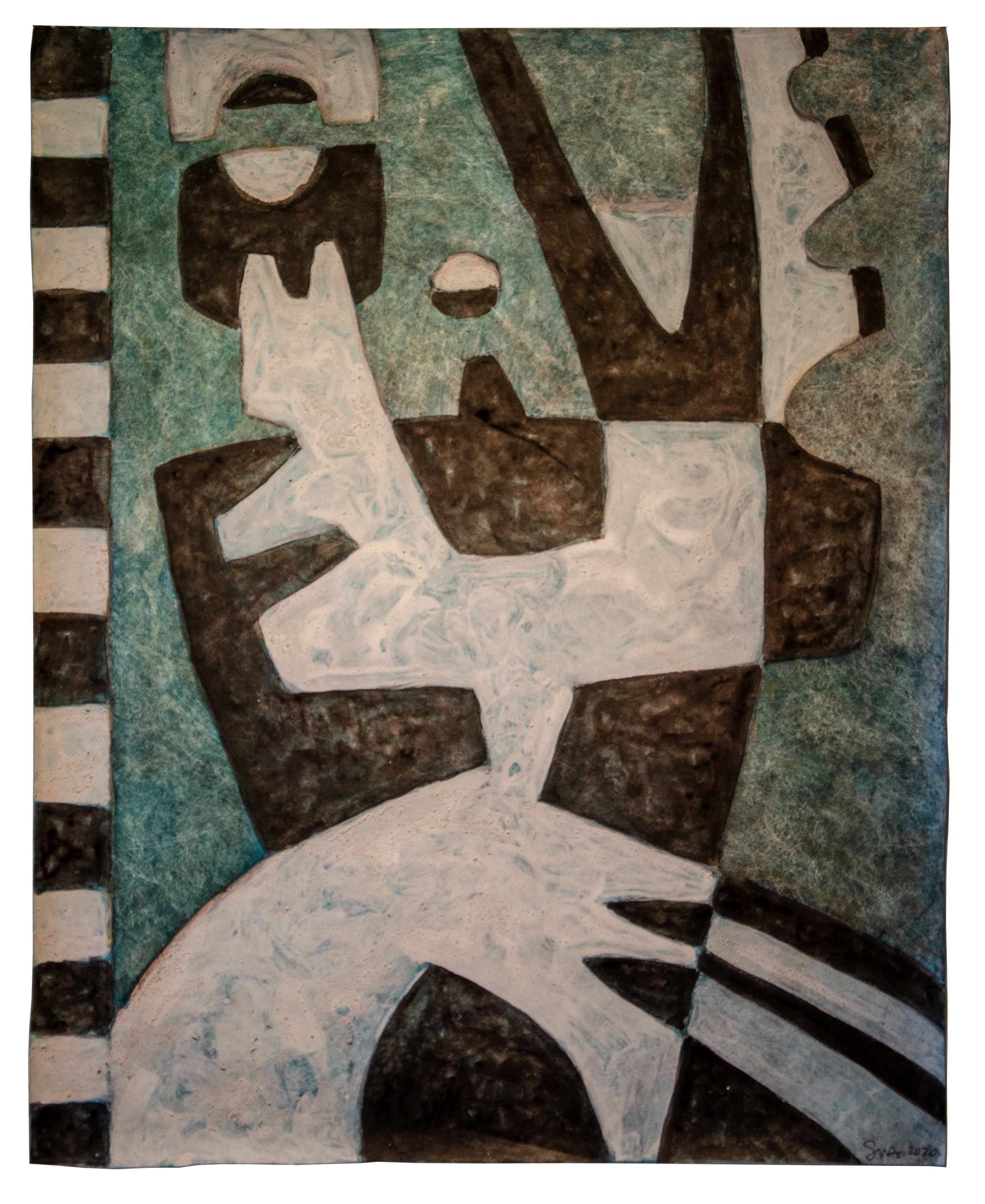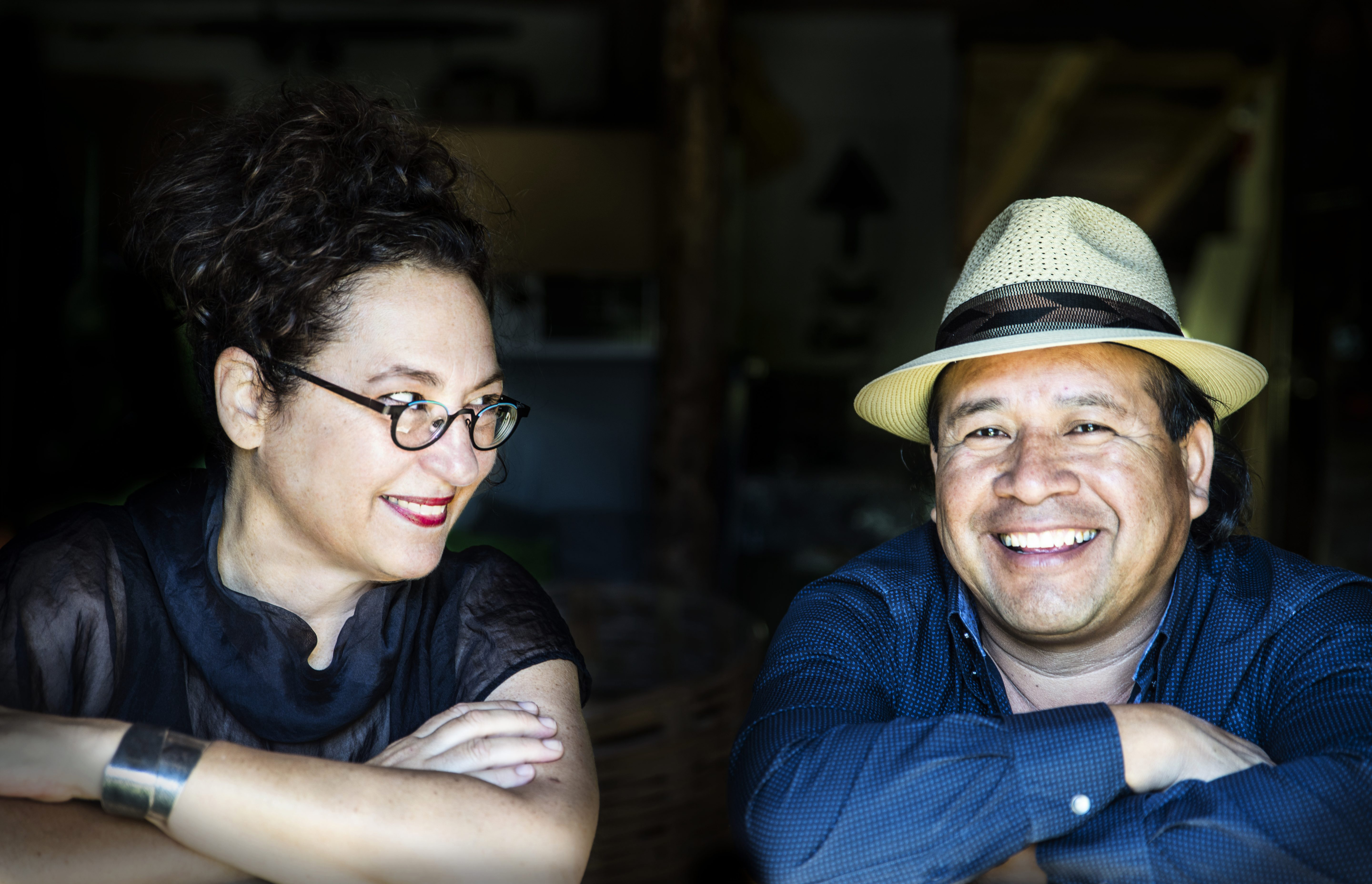Sandra Martinez and Wence Martinez
United States of America + Mexico

Sandra Martinez
Abrazar Study, 2020
Tyvek, acrylic, sumi, charcoal
30"x 24"
Abrazar Study, 2020
Tyvek, acrylic, sumi, charcoal
30"x 24"

Wence Martinez and Sandra Martinez
Abrazar Weaving, 2020
Hand-spun, Churro wool dyed
using indigo and cochineal
Natural, un-dyed creams and browns
37" x 29.5"
Abrazar Weaving, 2020
Hand-spun, Churro wool dyed
using indigo and cochineal
Natural, un-dyed creams and browns
37" x 29.5"
Committed to the traditions and materials of his heritage, Wence Martinez hand dyes hand-spun wool from Oaxaca. Hand-spun Churro wool is sourced by Wence from the same spinners his family has supported for generations, and he hand dyes it using indigo, lichen, cochineal, pomegranate, and more. Village craftsmen build his walking floor looms that spark a common question from gallery visitors in rural Wisconsin: “How do you turn this thing on?” Cultural bridge building has always been a strong part of the work.
Wence Martinez combines traditional methods and materials from his Zapotec heritage with Gobelins technique to create original designs that reflect his love of pattern and tonal variation. He also collaborates with Sandra Martinez, his partner of over three decades, to weave her Symbolist designs, and mentors their daughter Malena and son-in-law Jacobo as they assist and learn master skills. He’s not weaving every brushstroke, but interpreting through his own lens and invigorating the woven work with his own tonalities. This transformation of Sandra’s paintings results in functional weavings that carry the accumulated energy of everyone involved.


process images for Abrazar Weaving
Layers of sumi ink, ash, dirt and acrylic washes, pastel, and pencil build up to reveal hints at human, plant and shelter forms in her work. Gifted, accessible materials like old book pages and manuscripts, scraps of old work, butcher paper, and Tyvek are substrates. The artists look over Wence’s dyed yarns to discuss options, but the goal is not to replicate the painting. Within the skeletal framework, Wence interprets through his own lens and invigorates the woven work with his own tonalities in a full release.
about the artists

Sandra Martinez (left) was born in 1959 in Milwaukee and majored in Studio Art at the University of Wisconsin-Green Bay. Under the mentorship of David Damkoehler, she was influenced by the time-honored use of drawing as a vehicle for spiritual focus and exploration. Her art shifted away from ceramics, beginning a nearly 40-year-long automatic drawing practice focused on simple, accessible materials that continues today.
Wence Martinez (right) was born in 1959 in Teotitlán del Valle, Oaxaca, Mexico, and spent his childhood shepherding and learning to weave under his father and grandfather. At age 14, a scholarship in weaving took him to Taller Nacional de Tapiz in Mexico City. Under Bertha and Pedro Preux, Martinez studied Gobelins, natural, and aniline dyeing techniques, and he embraced weaving design as fine art. In 1988, he met Sandra (Hackbarth) Martinez, an artist from Milwaukee. Their artistic collaboration culminated in establishing Martinez Studio in 1994 in Door County, Wisconsin, and on Canyon Road in Santa Fe in 2020.
Collections: Museum of Wisconsin Art, West Bend; National Museum of Mexican Art, Chicago; Smithsonian Institution, D.C., United States Artists Fellowship for Collaborative Craft 2018, Finalists ACC Rare Craft Fellowship, 2017. Awards: 2018 United States Artists Fellowship for Collaborative Craft; 2017 Finalist for Rare Craft Fellowship from American Craft Council; 2019 Excellence in Fibers IV: Wall/Floor Works.
interview